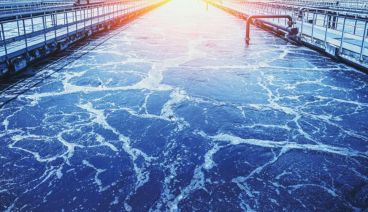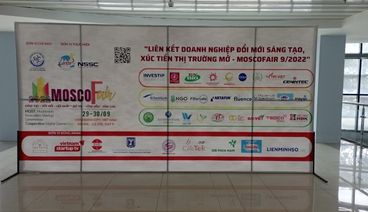DISSOLVED AIR FLOTATION, CHEMICAL FREE OPERATION
What is a Dissolved Air Flotation?
Dissolved Air Flotation in wastewater treatment has the function of separating and removing Total suspended solids (TSS) from the liquid based on the solubility of the barometric pressure.
The smaller the particles suspended in the water, the longer the settling time. Solids can settle by gravity naturally, differing only in the time it takes to settle. With some types of suspended particles, the flotation time will be faster than the settling time due to the size and specific gravity of the particles, for example: mineral oil particles, fiber particles, cellulose, ...
The principle is to dissolve the air in the wastewater under pressure, then release the air at atmospheric pressure in the tank. The air released forms small bubbles that cling to the matter that float to the surface of the water and are easily removed.
DAF equipment can be installed in different locations of the water/wastewater treatment line depending on the nature and design of each project.
(PICTURES) Chemical-free Dissolved Air Flotation, Chemical-free DAF equipment for paper mills, post-treatment water quality of Dissolved Air Flotation for milk/cream factory
Types of suspended solids, particles suspended in water
|
Size of suspended particles (Diameter –m) |
Type of particles |
Time for sedimentation |
|
10 -2 |
Gravel |
0.3 seconds |
|
10 -3 |
Coarse sand |
3 seconds |
|
10 -4 |
Fine sand |
38 seconds |
|
10 -5 |
Alluvial seeds |
33 minutes |
|
10 -6 |
Bacteria, microbial mud |
35 hours |
|
10 -7 |
Clay particles |
230 days |
|
10 -8 |
Colloidal particles |
63 years |
Suspended solid particles work in the absence of chemicals
Most of the solid particles suspended in water carry Negative (-) charges and are in a STABILITY by electrostatic repulsion, when in STABILITY, the particles will not coagulate with each other and remain suspended in the water.
Particles with no charge will freely collide and coagulate with each other
Particles with the same electric charges will repel each other.
Solid particles suspended in paper wastewater
In the food and paper industry, the waste stream from pulp and paper mill produces a large amount of coarse waste such as pieces of adhesive tape, etc. or cellulose fibres, suspended pulp, etc.
Buffered cellulose powders tend to float and should be removed from the water by flotation.
Other solid particles such as sand, which are often very heavy and tend to sink, should be removed by settling.
The purpose of the flotation method or the settling method is the same, both to separate the suspended SOLID from the water.. However, depending on the nature of the particle, our NGO company decides the appropriate method of removal.
Effects of PAC, Polymer
PAC: can break the STABILITY of particles to facilitate the particles to coagulate together.
POLYMER: has the effect of accelerating the coagulation of the flocs together and the formation of large flocs
=> The effect of CHEMICAL (PAC, Polymer) is to REDUCE the coagulation and flocculation time of particles suspended in water, thus assisting to REDUCE the flotation or settling time.
(Image) PAC addition, stability break, particles coagulate
Principle of using NGO's DAF WITHOUT CHEMICALS
DAF specifications are based on:
- Amount of Dissolved Gas (Gas Capacity) and Gas Rate Required for flotation
- Hydraulic retention time for TSS to float to the surface with micro gas from which the DAF Diameter and Height Decision is made
- Design the TSS removal performance of each DAF until the post-processing output TSS requirements are met
Based on the wastewater characteristics of each plant, NGO will design measuring equipment for each project, ensuring optimal treatment efficiency without the use of chemicals.
The solution of NGO International Co., Ltd. is beneficial for food and paper production enterprises
- It can treat most of TSS in wastewater, and utilize and recover these TSS to increase economic benefits (for example, recover cellulose fibers in the paper industry, ...)
- No chemicals are used, thus bringing great economic benefits to businesses. Considering the cost of chemicals used for traditional flotation equipment only, using NO CHEMICALS Flotation has an exceptionally fast payback period (6 months - 1)
Article published in the Journal of the Vietnam Pulp and Paper Association, 3rd issue in 2021
Link to the article: http://vppa.vn/wp-content/uploads/2021/08/TAP-CHI-CONG-NGHIEP-GIAY-32021.pdf
thong_tin_lien_quan
Recent post

%20%E1%BA%A2nh%20SmartB_Chen%20bai%20vi%E1%BA%BFt%2016102018_Resize.jpg)


